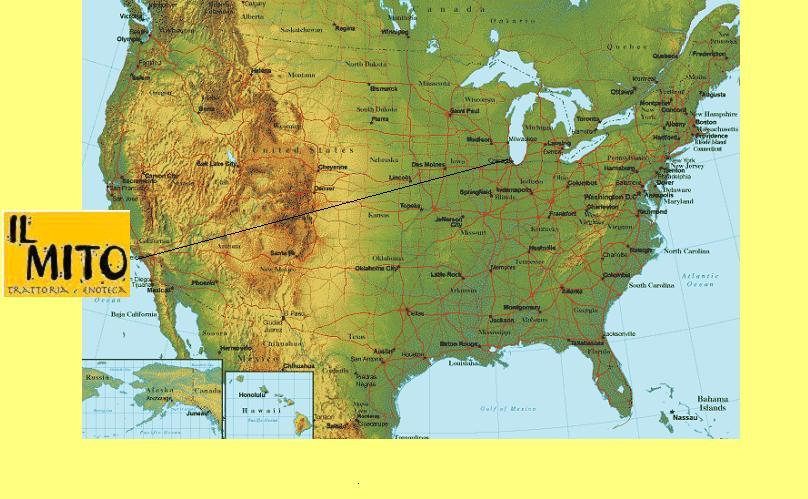It has been more than three years since my wife and I uprooted our southern California family and plopped them down in the Midwest.
It’s been good.
Our girls are both blossoming here. The change of seasons is enchanting. The abundance of space is liberating. Yet, as our eldest likes to remind us, it’s not the same.
Actually, what she says is that she looks forward to moving back to CA one day. Sadly for her, it might have to wait until college, because it’s not in the cards anytime soon.
Still, I know how she feels.
Los Angeles is a place I have been forever returning to. A year in Berlin, a summer in England, three years in Santa Barbara and a year and a half in San Francisco all ended the same way—with a sweet return to the home land. And for me, the emphasis is always on the word land.
The long finger of hills that run from Griffith Park to the Santa Monica Mountains. The San Fernando and San Gabriel valleys swept dry by warm Santa Ana winds that roll through the palm trees. The purple frame of mountains that spills across the basin and into the sea. That is the Los Angeles that has always called to me—a paved over, but still wild land .
It was no wonder then that my return from UCSB some years back found me living in the Valley for the first time. I had a one bedroom apartment without roommates. I grew my own basil, bought my own butcher block and finally started to learn how to cook.
I also discovered a few new restaurants I liked. The one that stuck with me, Il Mito, was a small Italian bistro on Ventura Boulevard run by a man named Michael Feker. It was also where I tasted tiramisu for the first time and in all the years since, I have never tasted another one like it.
I was so taken with the dish that I had the audacity to ask the chef how he made it.
He told me.
The key, the one ingredient that Feker used that I have never seen in any other tiramisu, is Sambuca. This anise-flavored liqueur adds a sweet bite to the dessert that neither rum nor Kahlua nor any other alcohol can match. It’s how I’ve made tiramisu ever since.
It’s also how I flavored my ice cream this week.
I didn’t go all the way with the tiramisu for this recipe. I used cream instead of mascarpone because I wasn’t sure how the cheese would freeze. Nonetheless, the ladyfingers and the liqueur make this the most cosmopolitan version of “Cookies and Cream” ice cream you’ll find anywhere.
It was really good, too. My kids loved it, my wife, even my in-laws. Would Mr. Feker? I expect so. One day I hope to tell him about it. Coincidentally, he has since closed Il Mito in Los Angeles and moved it to the Midwest of all places (see his website here). One day soon, I hope to take my family up to Milwaukee for a visit.
It will be like going home.
Tiramisu Ice Cream
(about 2 quarts)
1 ½ cups milk
¾ cup sugar
2 T flour
A few grains salt
2 eggs or 3 yolks (pasteurized, if possible, see note)
16 oz. water
2 t instant coffee
½ cup sugar
12 lady fingers
1 ½ cup cream
4T Sambuca
- Blend milk with sugar, flour and salt, and heat to 180-190ºF stirring frequently until thick, cover for 10 minutes.
- Beat eggs and add ½ cup of mixture while beating, then add eggs to mixture.
HEALTH NOTE: Since you’re dealing with eggs here, you need to take care when cooking the custard. Too much cooking and the custard gets lumpy, too little and you risk salmonella. Another alternative is to use pasteurized eggs.
- Heat the mixture for one minute over medium, then cool with plastic wrap or wax paper pressed onto the top of the mixture to keep it from developing a skin. Cool for several hours or overnight.
- After you make the custard, sweeten two cups of decaf instant coffee with a half cup of sugar. (I wanted my kids to eat it so I went without caffeine and instant? That was just faster. If you’d rather, go for espresso.) Then immerse ladyfingers one by one into the coffee, taking care to pull them out quickly so they don’t break apart. Afterward soaking the ladyfingers, I put them into the custard to infuse the cream with more of the coffee/cookie flavor.
- Add the cream and Sambuca to the cooled custard mix and freeze.
- Put the frozen ice cream in the freezer for a couple of hours to give it the chance to firm up.
NOTE: When freezing ice cream, you need to use an ice cream freezer to ensure that a certain amount of air is mixed into the frozen cream. This gives it a lighter, less icy consistency. When freezing sorbet, you may also freeze it in a popsicle mold, a bowl or on a sheet pan. Be sure to stir the mixture occasionally to limit the size of the ice particles. Larger chunks of ice make for granita, miniscule chunks make for a nice smooth sorbet (an ice cream freezer is ideal).
Photo Credit: “Il Mito,” the restaurant that inspired this week’s recipe.
I’ve never been a restaurant regular kind of guy. Home has always been the focus of my cooking and my eating. This probably doesn’t make my wife especially happy. (Sorry, hon.) Still there are a few restaurants I would go back to again and again. Il Mito was one of those. What’s your favorite place to eat? What do they serve there? And what’s for dessert? Let me know in a comment.


